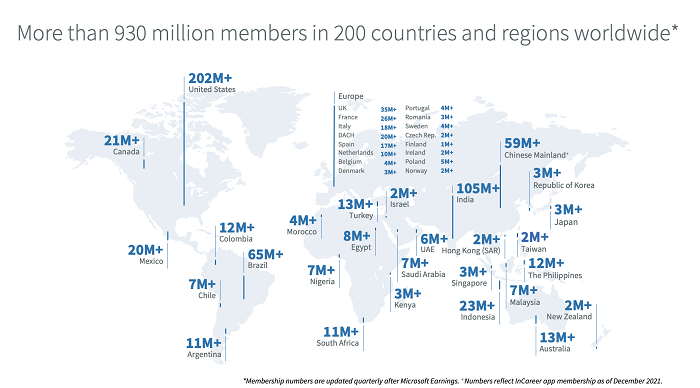LinkedIn’s overall member count is set to take a hit, with the professional social platform shutting down its remaining Chinese job service, called InCareer, which will also see the loss of 716 jobs.
LinkedIn shut down its main LinkedIn platform in China back in 2021, due to government restrictions on its operations. As a result, LinkedIn essentially reduced its Chinese presence to a simple job posting network, but now that’s going too, which will see the app say goodbye to around 59 million members.

LinkedIn CEO Ryan Roslansky says that the decision to end its InCareer project, originally called ‘InJobs’, comes as a result of ‘fierce competition and a challenging macroeconomic climate.’ Which sounds pretty generic, but essentially, LinkedIn has run into various restrictions and regulatory challenges relating to its Chinese operations, which now seem to have made it unworkable for the company to keep offering a limited China-only service.
As per Roslansky:
“We’ll focus our China strategy on assisting companies operating in China to hire, market, and train abroad. This will involve maintaining our Talent, Marketing, and Learning businesses, while phasing out InCareer, our local jobs app in China, by August 9, 2023.”
LinkedIn’s parent company Microsoft has been ramping up its operations in China, with its cloud computing division set to drive significant new potential in the market. Indications suggest that with China’s new data privacy laws coming into effect, LinkedIn has come under more scrutiny, and rather than risk a showdown with Beijing officials, Microsoft is instead pulling LinkedIn out of the market entirely, with around a third of the impacted staff to be re-assigned to new roles in the organization.
In terms of overall growth, it’s not a major blow to LinkedIn, especially considering the changes it’s made to its operations in the region. As noted, it will see LinkedIn’s member count drop, but it’s also worth noting that ‘members’ and ‘users’ are not the same, with reports also suggesting that the platform was never a hit with Chinese users either way.
Essentially, the change comes as a result of several factors, there’s no one element that you can point to as the cause of LinkedIn’s demise in China. But it effectively means that the last remaining US social platform available inside the Great Firewall is now gone, further segmenting the world wide web.
Which also highlights the challenge now facing TikTok – if China is making operating conditions so difficult for US social media apps, or blocking them outright, why should Western nations allow TikTok to keep operating?



